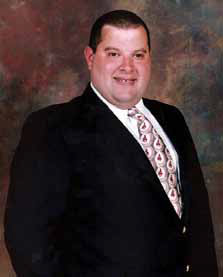Meet Your Manager: Thomas M. Hood, Director of Technology Operations, The Cleveland Museum of Art
AV Technology Editors: Do you do in-house AV installation? If not, who is your systems integration partner?
Thomas Hood: We have a mix of in-house AV staff who handle the basic daily AV operations along with our integrator, Zenith Systems, which supports our more specialized and high priority AV systems, such as Gallery One and our Board Room.
Among our recent projects, Zenith Systems was involved in the development of our Collection Wall in Gallery One, which is a 40-foot-wide multi-touch video wall composed of Christie MicroTiles, an LED-based rear-projection cube intended to be integrated as an architectural element. The Collection Wall allows visitors to interact with the museum’s collection of art on the screen, while simultaneously personalizing their own tours at iPad stations.
Should tech managers attend InfoComm?
Given that all of the new AV systems have some type of networking and high-tech components, I feel that attending such trade shows is beneficial for tech managers to get a better understanding of the emerging AV trends and their impacts; to know which options are available that can be included in their overall tech planning for an institution. Trade shows like InfoComm are excellent places to learn about new innovations and trends in the industry.
How is AV/IT convergence impacting your day-to- day work?
Interestingly enough, we find that the convergence is having more of an impact on our tech support staff, who seem to be adapting more readily to supporting the AV components of our museum. But it hasn’t necessarily worked the other way: Our AV staff tends to be less able to support our tech components, such as the computer and network systems that operate the AV systems.
We do see examples where this convergence is impacting how we implement new technology. For example, in building the Christie MicroTiles-based Collection Wall, we found that it was best to hire an AV integrator who could be involved in all steps of the process, and this proved to be a key factor in keeping the installation on budget and schedule. Also, the early participation of the AV integrator in the design phase allowed us to further coordinate the work with the architects as well as electrical and mechanical engineers.
What is your involvement with emergency paging/notification systems and or security in your facility?
Our emergency paging system is part of our building’s life systems, such as our fire alarms. State code requires that these systems not be connected to the network, so they are isolated system managed by our protection services department.
What troubleshooting tools do you regularly use in your facility?
Since most AV systems are now connected to the network, we can utilize our Network Monitoring system (WhatsUp Gold) to know if an AV system is connected. In addition, most AV systems (such as projectors) now have the ability to send out email alerts, which help us to be more proactive in supporting these devices.
What AV equipment/gear are you most interested in procuring for your facility in the next year?
Thomas Hood: We’re looking at numerous possibilities, but we’re sure that a modular design and interactivity will be important considerations, so that spare parts can be on site and more easily repaired; and also, a failure of one system won’t necessarily mean the entire system must go dark.
For example, with the Collection Wall, the Christie MicroTiles can be assembled in different ways, giving us the option of considering a new configuration in the future. As well, the interactivity function is an add-on, developed by a company called Baanto with a technology called “Shadow Sense.”
Using such modular designs, a software or hardware failure can be mitigated by having the exhibit perform in a limited way until we can bring the entire system live again. In this case, if the actual interactive is not working, there can be engaging signage on the screen rather than a dark monitor. Remote IP-based power switches are also important considerations, as they allow for remote reboot of any exhibit to restore it in the event of a software problem that requires reset of the touch interface or display.
If you would like to participate in the Meet Your Manager section, email AVTIntern@nbmedia.com.










